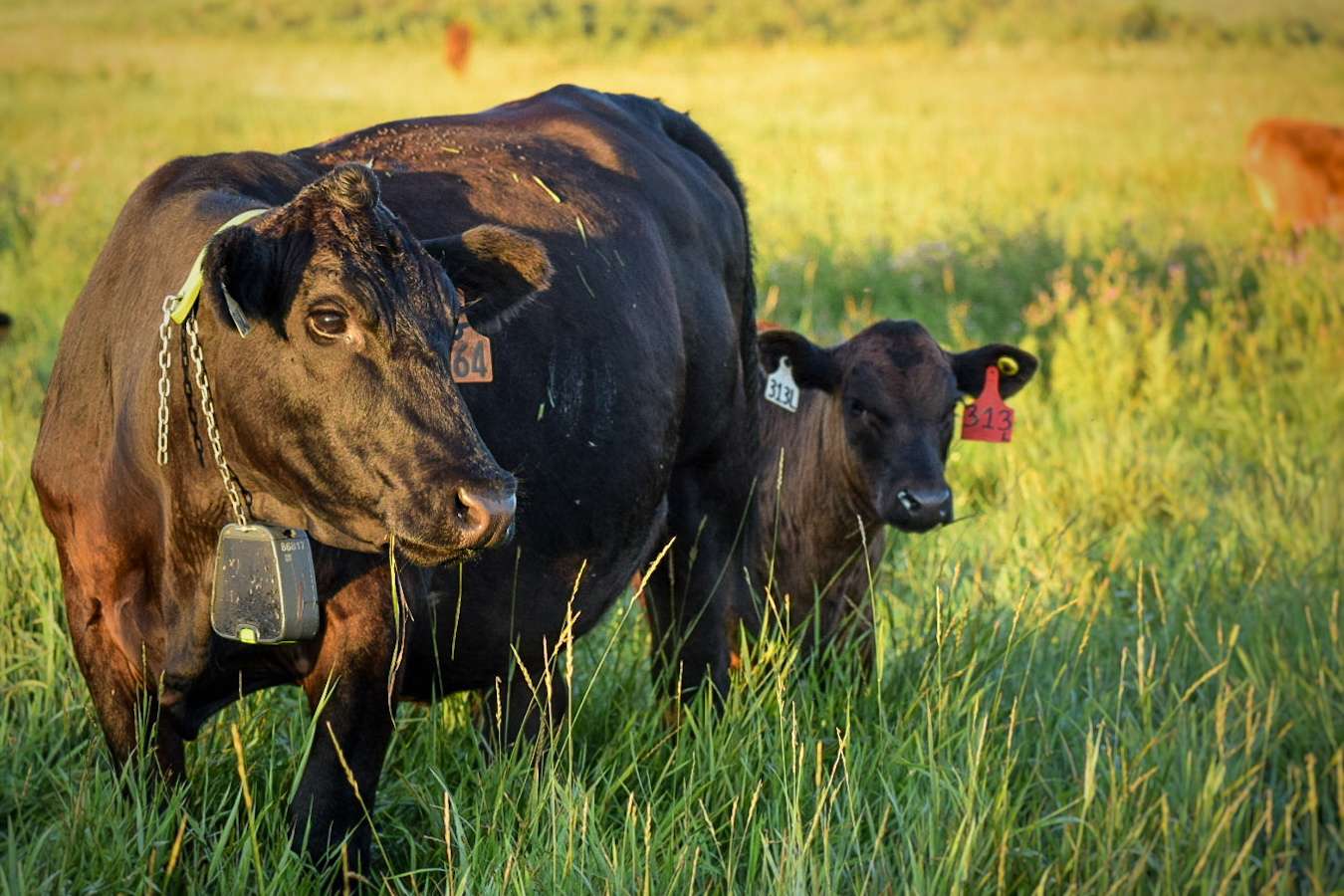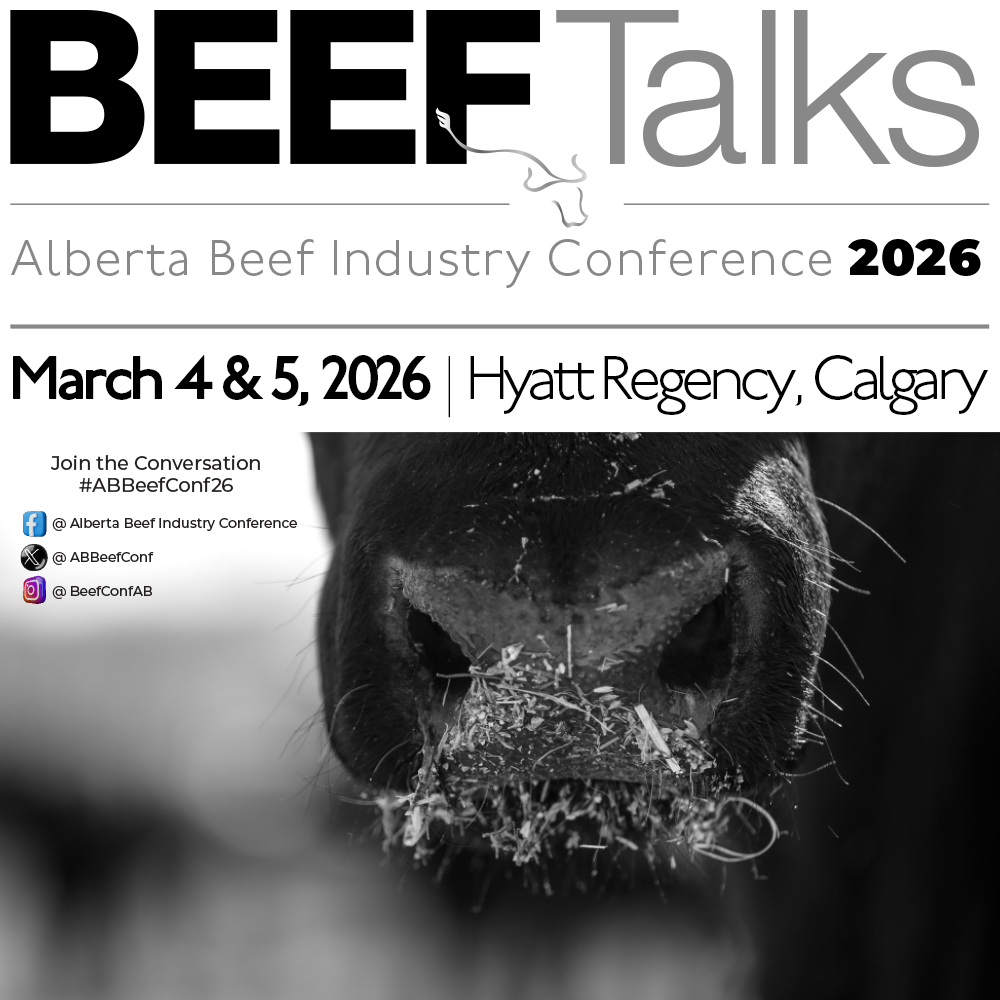AB Direct - Steers
Rail: 492.00-493.50 FOB feedlot (last week)
AB Direct - Heifers
Rail: 492.00-493.50 FOB feedlot (last week)
US Trade- Steers
Rail: 355.00-363.00 (IA, NE) last week
US Trade - Heifers
Rail: 355.00-363.00 (IA, NE) last week
Canadian Dollar
0.19

Virtual fencing on a Canadian landscape
A two-year research study examines how virtual fencing technology might fit the Canadian landscape.
European and U.S. cattle industries experienced an influx of livestock-based technologies lately including virtual fencing. While it appears successful in warmer climates, will this technology hold up in colder, Canadian regions to become a fixture of cattle management?
Alexandra Harland, a master’s student at the University of Alberta addressed this question during a two-year research study at the Roy Berg Kinsella Research Ranch.
The trial began in 2022 using Nofence, a Norwegian technology to manage 49 naïve heifers. In 2023, Harland continued the research by bringing back 39 of the original heifers with their calves. During both summers, the heifers were fitted with GPS-capable collars and contained and moved through rotational grazing patterns using the Nofence mobile app.
Virtual fencing typically uses standard batteries or solar-powered collars to keep animals within a virtual boundary drawn on an app. When a boundary is crossed, a sound warns the animal. If they don’t move away, they receive a small electric shock. Some providers use cellular networks, while others feature strategically placed towers or base station infrastructure to receive and transmit data between cell phones and collars.
Containment and stimulus results
“In our study, the cattle were contained in the correct pasture over 99 per cent of the time,” Harland says. “Of the few escapes we had, they eventually rejoined the group on their own. Once comfortable with the system, cows occasionally called across boundaries for their calves but never tried to join them.”
She explained during the training process, the heifers didn’t understand what the repeated sound warnings meant so received shocks up to 30 per cent of the time.
“After training, we saw shock rates between two and five percent of the times an audio warning was given,” she says.
Moving cattle was simple
Harland rotated the herd by opening virtual sub-pastures to include old and new grass, then waited for the animals to move independently.
“It usually didn’t take long as they had been seeing and smelling the fresh grass for a few days,” she says. “After an hour or two, they’d all be in the new pasture, and I’d simply close up the back end so they couldn’t return.”

The study was completed on tame pastures with small, forested areas, rolling hills, and brush. Harland notes heavy bush might cause some lost collar issues, but further trials are required to address this.
Testing the weather challenges
A separate winter trial at Lakeland College that Harland participated in used steers to determine battery capabilities and collar re-charging rates in colder temperatures.
“I expected the solar batteries to lose all their charge, but on average, they stayed between 85 and 100 per cent throughout the trial and performed extremely well in the colder conditions,” she says.
Farming grass for the future
Harland believes virtual fencing also helps the environment, wildlife, nature conservation, and pasture grasses by making better use of rotational grazing.
“Ranchers are often described as grass rather than beef farmers since the grass they grow feeds the animals. Accurately controlling grazing drives their productivity.”
She thinks while this technology is still young, it will develop quickly. Accelerometers, temperature and motion sensors, estrus cycle alerts, birthing notifications, and even drones are already being trialed in combination with fencing technology.
“I think virtual fencing is here to stay in Canada,” Harland says. “Companies will try to differentiate themselves by adapting and improving their tech. It won’t be right for every producer but will be a serious option as it becomes more refined and less expensive.”
This research was supported in part by Alberta Beef Producers.


